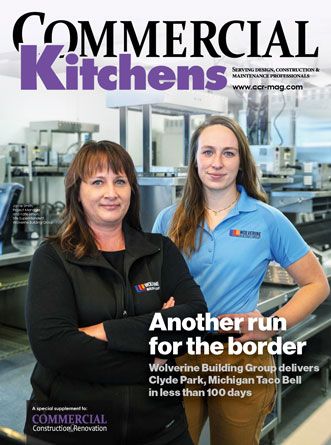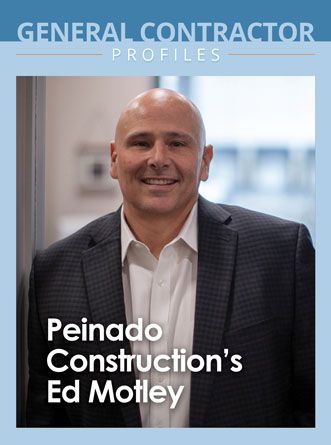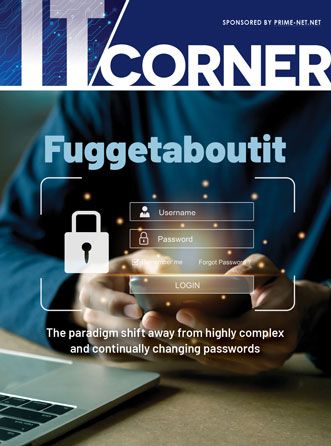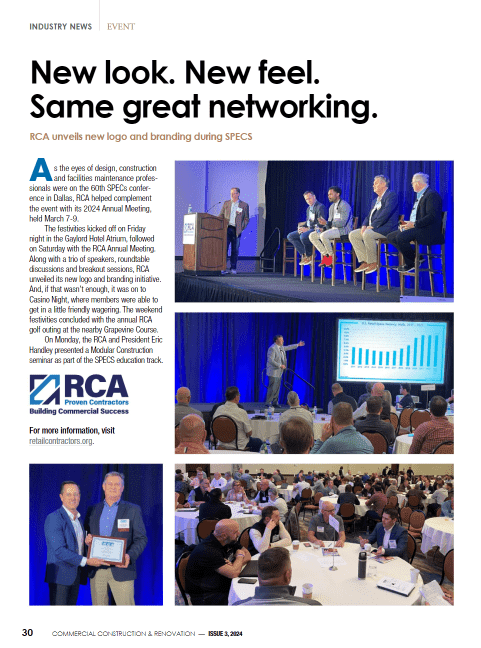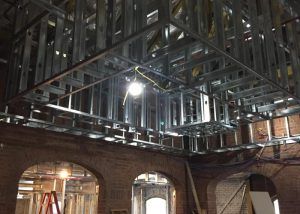
Logistics has developed into a science of efficiency. But these days, distribution center efficiency is about far more than how fast you get your orders out the door. Long-term cost efficiencies require specifying for materials, building systems and designs that will provide energy savings and lasting operational cost savings.
Especially when considering how many warehouses must be heated, cooled or able to control for humidity, designing for energy efficiency becomes that much more important. What follows are a few keys to designing warehouses and distribution centers of all types with recouping long-term energy savings in mind.
Capturing energy-efficiency savings
Early-stage design considerations like utilizing Tilt-Up walls and standing seam metal roofs get your project off to the right start. Using concrete panels that are poured on-site then tilted up into place allows for airtight seals and continuous insulation that provide long-term energy savings.
Standing seam metal roofs, made from metal panels that run straight from your roof’s ridge to the eaves, eliminate seams and can be painted any color, allowing you to have a cool roof that reflects light and prevents solar heat gain. They even future-proof your building in case you decide to install photovoltaics down the line.
Another solution that delivers ROI is efficient zone lighting. And it’s not just about specifying the right bulbs. In modern distribution centers, you can set up automated lighting controls that work in conjunction with warehouse activity.
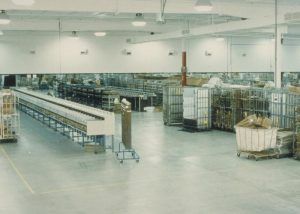
Lighting can be programmed to turn on when there’s activity in specified zones and to turn off during downtime. The lighting zones can be as big or small as needed, and the savings are significant. Other lighting solutions include daylighting and passive solar design.
By orienting your facility in an optimal way and designing the right windows and skylights, architectural designers can use the sun to both light and heat much of your facility. In addition to energy savings, research has shown these solutions improve worker morale and productivity while reducing sick time taken.
To further improve worker comfort and productivity, your facility can use indoor docks for unloading during cold weather. Distribution centers are largely “skin load” facilities, where energy loss and consumption is most affected by open areas that let heat in and out. Indoor docks help save energy and costs during winter.
Other great ways to achieve energy savings include:
- Solutions that reduce rooftop HVAC systems, which can reduce rooftop space used and negatively impact cost savings
- PV solar panels, which can achieve relatively fast payback and ROI not only through energy savings but also in the form of grants, rebates and utility credits
- Ceiling mounted fans, which reduce heat stratification and promote both airflow and worker comfort
- Additional insulation, which has a highly predictable ROI that makes it easy to invest in the optimal amount of insulation – it has to be optimized during design though, because not all insulation is created equal
- Using smart planning and design to eliminate thermal bridges, a major source of heat loss, energy waste and unnecessary costs
Perhaps the most important element of achieving energy-efficiency savings, though, is providing your project team an accurate picture of how you’ll use your facility.
With this information in mind, your team can accurately design a warehouse or distribution facility that accounts for how much energy you will use and better identify key opportunities for capturing savings.
For more info, please visit https://www.korteco.com/construction-industry-articles/achieving-energy-efficiency-warehouses-and-distribution-centers.
______________________________________________________________
Brandon Burd, NCARB, MBA, AIA, LEEP AP BD +C, is the director of sustainable design at The Korte Company. With more than 10 years’ experience in architectural design, Burd is responsible for assisting in building and site design, code analysis, consultant coordination and specification writing. In addition, he coordinates LEED activities for both the design and construction of green projects.

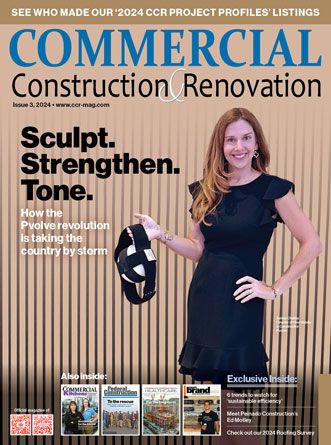





 The 2024 virtual Men’s Round Table will be held Q4, 2024, date TBD.
The 2024 virtual Men’s Round Table will be held Q4, 2024, date TBD.


